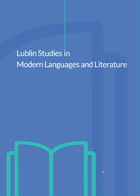
Konferenzbericht
Report on the conference: »Between Territories, Eras and Languages – on transitory Elements in Literature« September 16-17, 2014; organized by the Institute for German Literature at Marie-Curie-Skłodowska-University
More...We kindly inform you that, as long as the subject affiliation of our 300.000+ articles is in progress, you might get unsufficient or no results on your third level or second level search. In this case, please broaden your search criteria.

Report on the conference: »Between Territories, Eras and Languages – on transitory Elements in Literature« September 16-17, 2014; organized by the Institute for German Literature at Marie-Curie-Skłodowska-University
More...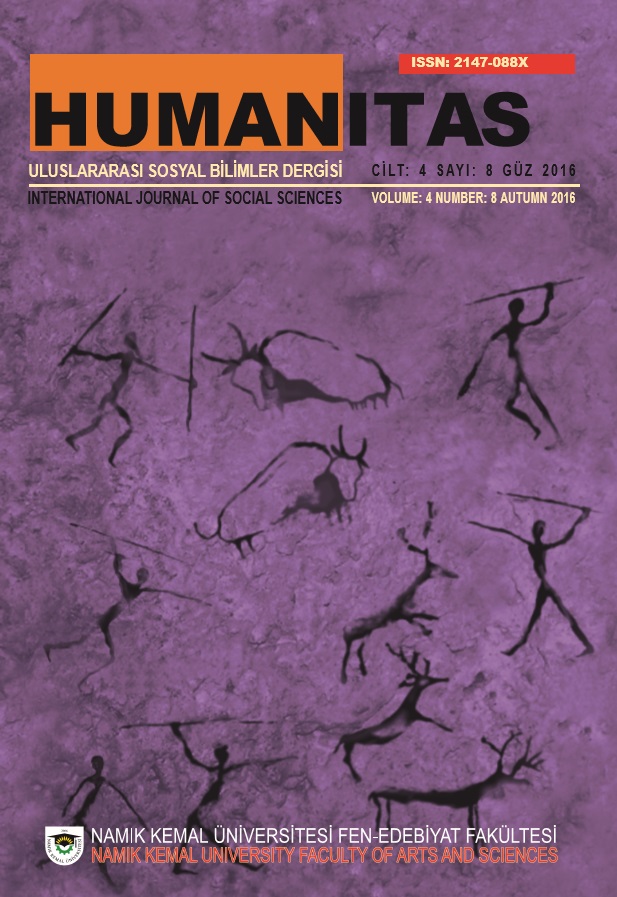
In this study, William Faulkner’s As I Lay Dying (1930), from Anglo-American literature, is compared and contrasted with Orhan Pamuk’s Sessiz Ev (1983), from Turkish literature, in the context of Western style modernist novel aspects, particularly stream of consciousness technique. The reason these novels are chosen as a subject matter of this study is that both novels have a very similar writing method and form. In both novels, the story is narrated through the different characters’ world of thought in different chapters through stream of consciousness technique. Yet, both novels were written in different times and periods. When As I Lay Dying was first published, the Western literature world had been living the high modernism period which paid attention foremost to the innovative writing techniques and the inner world of characters. Nevertheless, in Turkey, the novels in the sense of Western modernist style were seen much later, in about 1970’s and 1980’s. Therefore, when considering the publishing dates, it is very striking that Pamuk’s Sessiz Ev is very similar to Faulkner’s As I Lay Dying in the sense of modernist methods and techniques. The main reason for this consequence is – as it has been discussed briefly in the paper – The Turkish Literature and History of Art followed the modernism and postmodernism periods after Anglo-American world. Therefore, as a result of the identified common modernist techniques in the paper as well as his writing career and lifespan, it will not be wrong to state that Orhan Pamuk has been influenced by William Faulkner’s writing style and in Sessiz Ev he used modernist writing techniques similar to Faulkner’s As I Lay Dying.
More...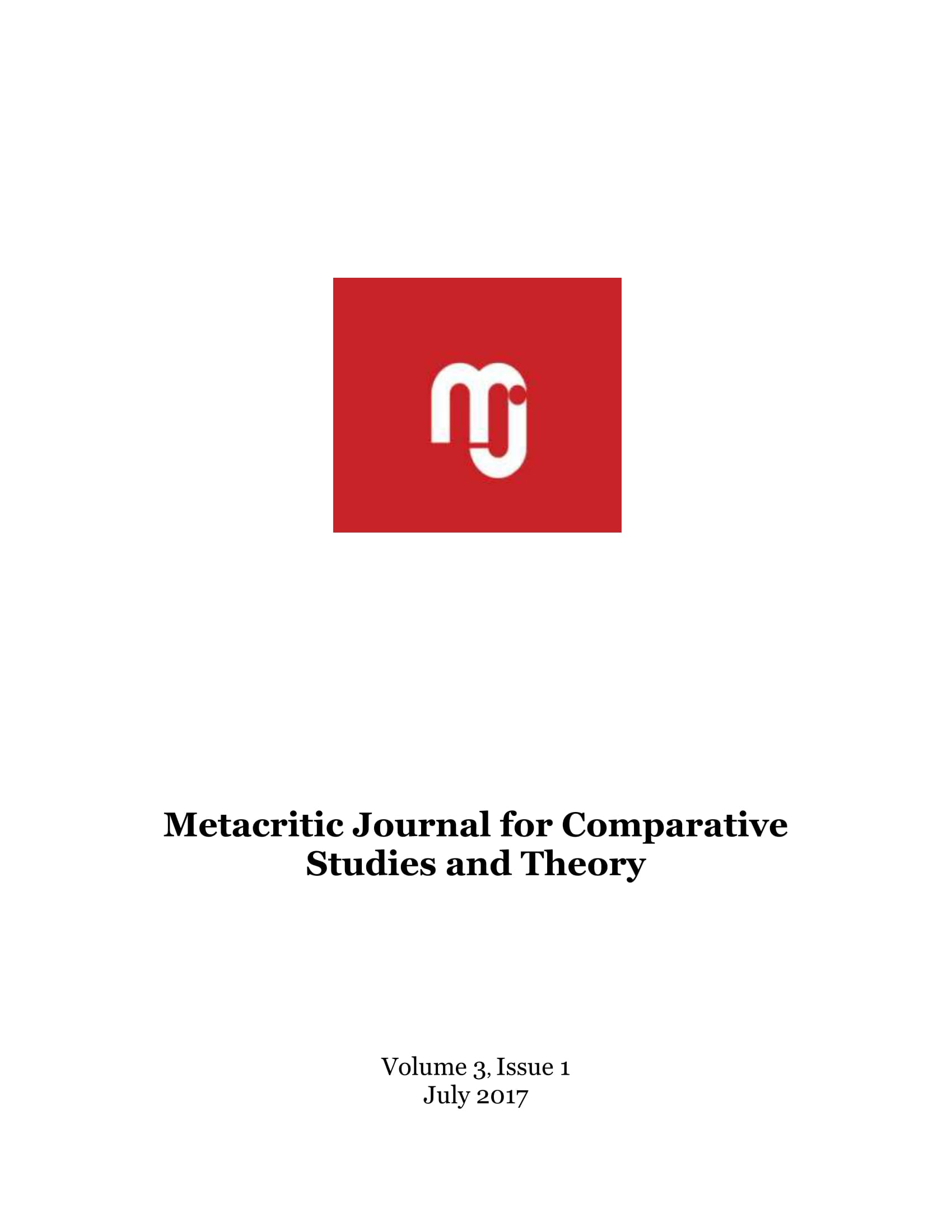
Gerhard Richter's books Text – a collection of painter's verbal statements about his artistic method – and Atlas – 783 sheets with images, mainly photographs and visual notations – are two archives that complement the understanding of his diverse artistic practice. The paper presents a textual model that experimentally simulates a possible ordering principle for archives. Richter's statements in the book Text are cut up and used as short quotations. Those that relate to multiple aspects of the painter's oeuvre are identified as hubs in the semantic network. The hubs are organized paratactically, as an array of different themes. The paper presents a methodological hypothesis and an experimental model that aim to connect the research of real networks with the paradigms of humanistic interpretation. We have to bear in mind that the network is a result of the researcher's interpretative approach, which is added to the initial archive included in the book Text. The breaking up of Richter's poetics into atoms of quotations is an experimental proposal of a new textuality in art history and humanities, which has its own history. In comparison to digital archives with complex interfaces that often tend to obscure the content, the elements in our experiment appear as specific configurations of the semantic network and are presented in a limited number of linear texts. The method of listing of quotations gathers the fragments into a potential “whole”, i.e. a narrativized gateway to an archive according to the researcher's interpretation.
More...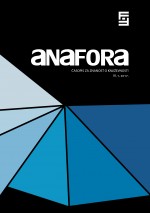
Beginning with the discussion of the terms narration and narrative, the paper asserts the difference between point of view, which is defined as “who” tells a story, and perspective, which shows “how” a narrator / a character perceives the events making up the story. To show the power of perspective in a literary work, the paper focuses on the young adult novel series The Raven Cycle by Maggie Stiefvater. The five main characters – Blue Sargent, Richard Gansey III, Adam Parrish, Ronan Lynch, and Noah Czerny – have been given unique perspectives that are unveiled through their separate character arcs. Blue’s perspective is clad with assumptions; Gansey’s is a clash between the perceived and the perceiving; Adam’s comes to light only when compared to other characters’ perspectives; Ronan’s is postponed and contrary to expectations; Noah’s is absent until the very end of the series.
More...
This paper is an attempt to compare Sam Shepard’s Fool for Love, published in 1983, and its cinematic adaptation directed by Robert Altman, released in 1985, in terms of the notion of possible worlds (in the philosophically-oriented branch of cognitive poetics). In her discussion of possible worlds, Marie-Laure Ryan proposes a typology of accessibility relations (identity of properties, identity of inventory, compatibility of inventory, chronological, physical, taxonomic, logical, analytical, and linguistic compatibility) in order to account for how the sense of the reality of our actual world reverberates in fictional worlds. Ryan also offers another typology, that is, the internal structure of the fictional world (knowledge worlds, intention worlds, wish worlds, obligation worlds, and fantasy worlds) to show how the characters’ different conceptions of the world define and build up the narrative structure of fiction. It is argued that the change of medium – drama into film in this case – results in some changes in the possible worlds projected, since verbality and visuality give rise to some differences in terms of modes of perception. Also discussed is the significance in this regard of the spatio-temporal scope, which is confined in the case of drama, a genre often conceived to be performed, whereas in a movie the director is able to expand this scope as the occasion demands.
More...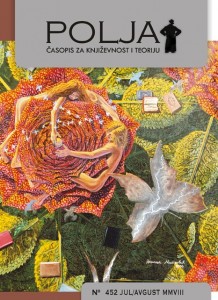
U periodu od 1969. do 1979, Edvard Said je redefinisao američku komparativnu kniževnost, stvarajući fraze, dopunjujući novi kritički panteon (Viko, Švab) i povrh svega, smišljajući metod. Iako je bio između generacija i suočio se sa dva različita tipa kontinentalnog emigranta – jednog filološkog, drugog tekstualnog – Said je vešto savladao drugog tako što je reinterpretirao prvog. U dvokrakom potezu, upotrebio je čitav arsenal argumenata protiv novog kritičkog formalizma i njegovih najnovijih avatara u „teoriji”. Sa ovim argumentima, njegov autoritet je bio tako prodoran i osetio se do te mere da je podrio zdanje tradicionalne komparativne književnosti time što je naglasio pozicioniranost forme i tranzitivnu inteligenciju humanističkih intelektualaca.
More...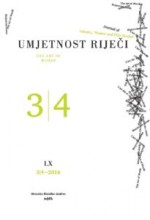

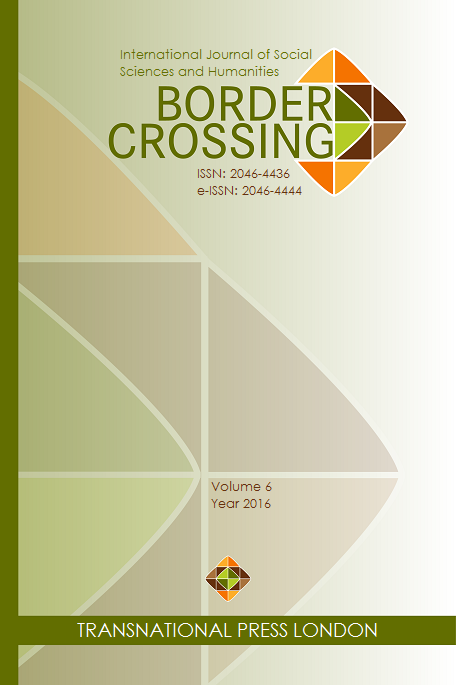
Amid the complexity of concern of the modernist literary discourse in Britain, the thematic nucleus of James Joyce’s writings is formed by certain basic aspects of life, such as individuality, art, religion, nation, language, and his work shows the two hypostases of the author himself as accomplished artist and Irish citizen. In a troubled period in the history of Europe and of his own country, Joyce grasped the sense and the atmosphere of frustration, alienation, futility, chaos, and confusion. The concerns of Dubliners, his first important book, published in 1914, consist in rendering the political and social life of Dublin, the misery of human condition, the theme of exile, the problems of the individual’s existence in an urban background which Joyce saw as paralyzed and, like Eliot, as an expression of a period of crisis in the history of humanity. Joyce intended “to write a chapter of the moral history” of his country, and he chose Dublin as it seemed to him “the centre of paralysis” on different levels which he presented under four aspects: childhood, adolescence, maturity, and public life. All the fifteen stories of the book express life experiences of the characters that are of unpretentious standing, incapable to fulfil inner potentialities and to establish communication with others. At moments they experience relevant epiphanic realisations, seemingly due to some trivial incidents – by which they receive an apparent perspective of accomplishment – and though they attempt to escape the bonds of everyday life and of their trapping circle of existence, all they get is an acute sense of frustration, alienation, and entrapment. To reveal and compare the thematic status of the epiphany in the short stories with regard to various issues of individual existence and to the use of motifs and symbols that create an increasing complexity of ideas and subjective human reactions represents the main purpose and the essence of the content of the present study.
More...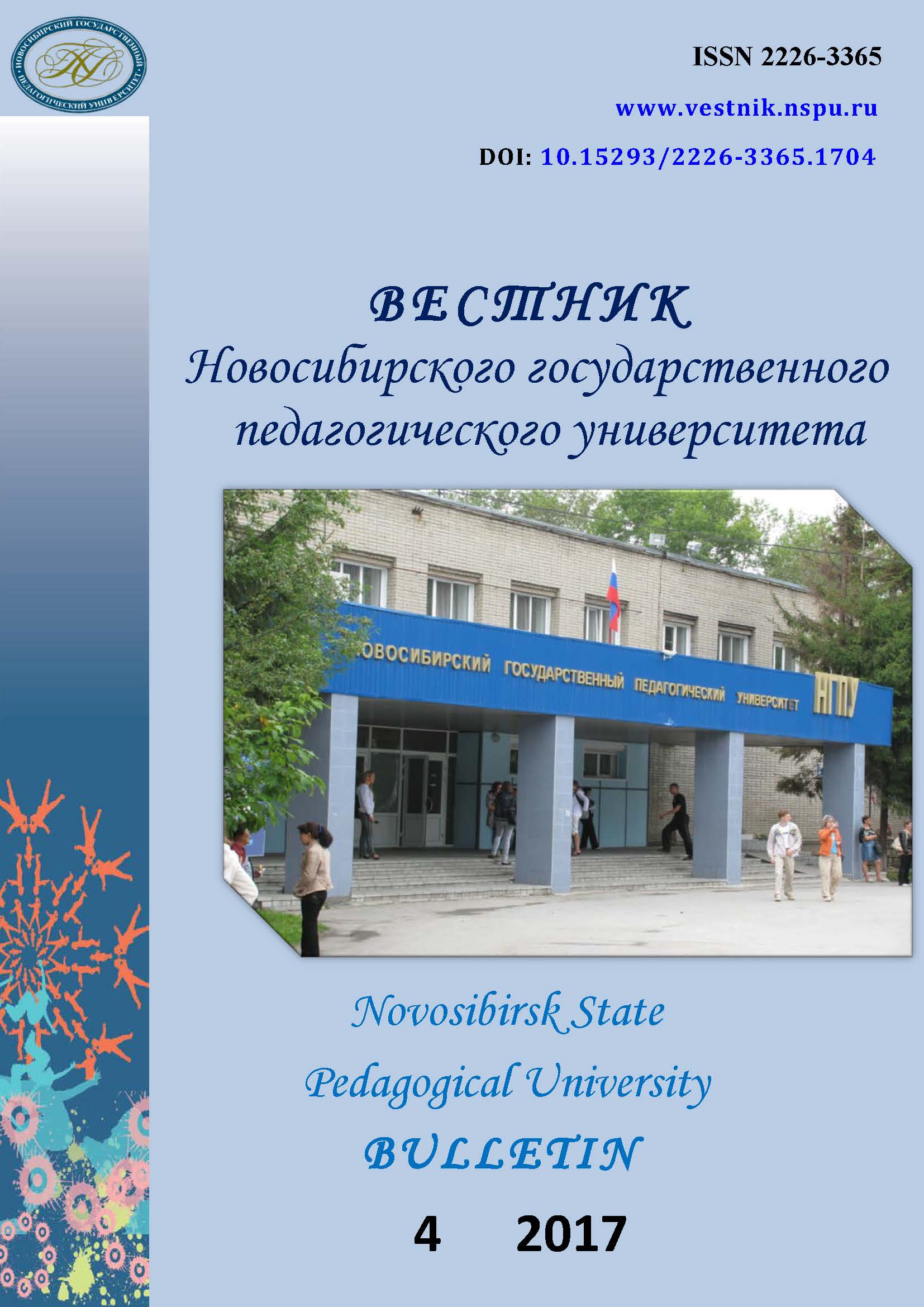
Introduction. The paper concerns the problem of supervising integrated bachelor theses, based on literary texts as materials for teaching a foreign language. The aim of the paper is to frame the principles of conducting integrated graduate research work which is to display professional and subject-specific competencies, acquired by graduate students during the course of study. Materials and Methods. The research is based on the following methods: observation; analysis and synthesis, employed to correlate literary, linguistic and teaching approaches to works of fiction and to systematize personal professional experience of teaching English and lit-erature and supervising graduation theses on these topics; and modeling, aimed at building the algorithm of integrated graduate research work. Results. The paper describes the algorithm of testing an authentic fictional text in order to determine its educational potential in teaching a foreign language. The educational potential of a text is revealed by means of analyzing specific text features on extralinguistic, content, structural and language levels and matching these features with reading exercises, activities and tasks they predetermine. Conclusions. The proposed research work algorithm, based on a complex approach to a fictional text as a source of linguistic, literary, socio-cultural, and historical information, can be effectively used to design teaching materials and to enhance the competencies acquired by bachelor students, majoring in teaching a foreign language.
More...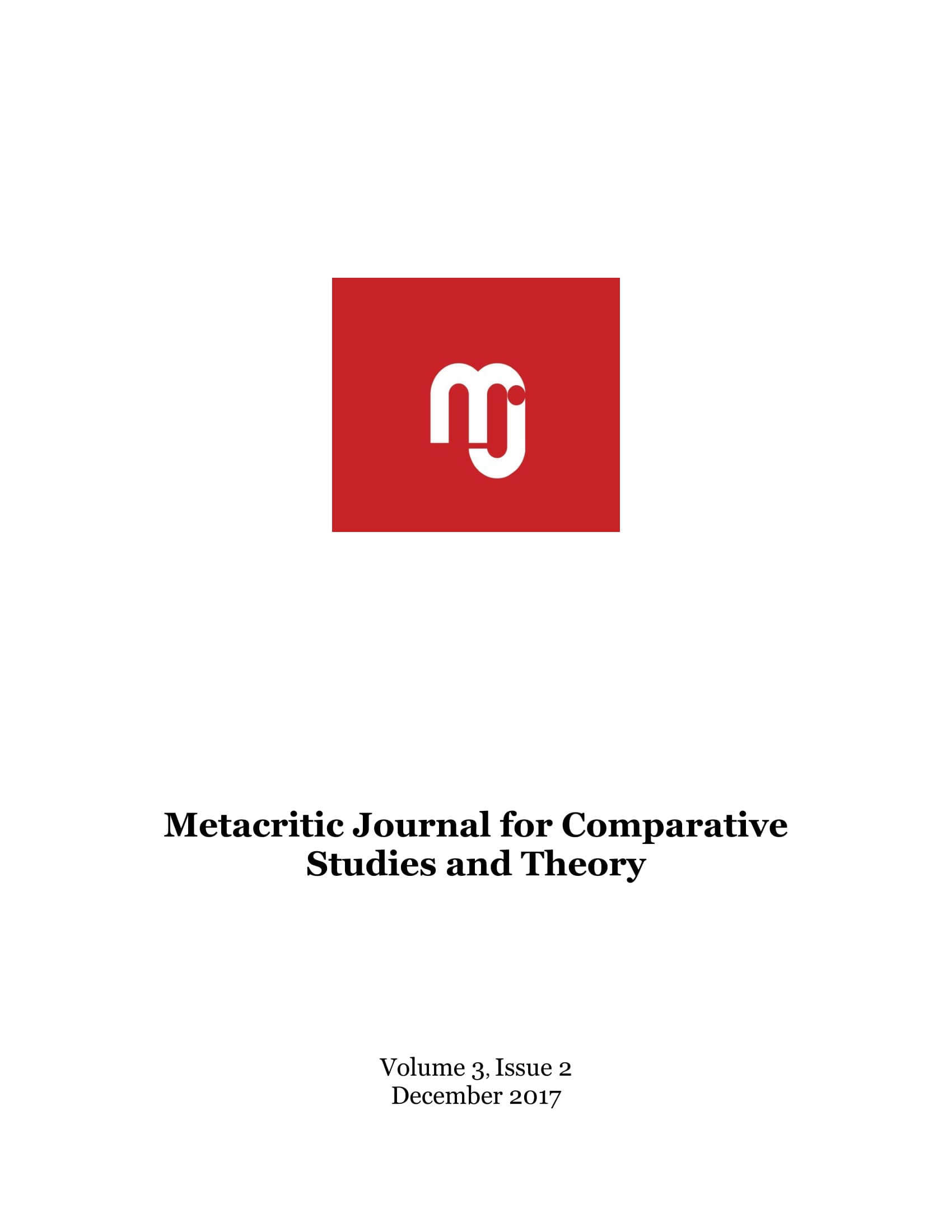
The essay suggests that Don DeLillo is one of the U. S. authors who have reflected most responsibly on the crisis of modernity’s fundamental institutions and community structures. Compared to the relatively stabilizing deep freeze of the Cold War, the late 1980s and the world after the fall of the Berlin Wall are, as DeLillo shows especially in his post-White Noise works, more interconnected, more “systematic,” and overall more “present.” Focusing primarily on DeLillo’s 1982 novel The Names and its “world presence” theme, the essay addresses the writer’s fascination with the systems that define the contemporary and its “aesthetic” and shows how some individuals set out to resist being defined and confined by our world’s networks of “madness.”
More...
Both in Speak, Memory and in Strong Opinions, Nabokov insists on his early proficiency in English, French. This authorial stance makes it easy to believe that the writer’s transition to English was easy. And yet, Nabokov’s correspondence with publishers and his literary agent, Altagracia de Jannelli, reveals that this conversion was torturous and required extensive support from native speaker editors and translators. The essay documents Nabokov’s inner turmoil at the time when he began to explore the British and American markets. In spite of the publication of Camera Obscura in England (1936) and, as Laughter in the Dark, in the US (1938), his other works’ journeys to the Anglophone reader required time and effort. A close reading of the famous afterword to Lolita, a comparative analysis of Winifred Roy’s translation of Camera Obscura and Nabokov’s self-translation of Laughter in the Dark, and the perusal of the author’s correspondence illustrate the difficulties he had to overcome in order to convey stylistic intricacy of his fiction to this new audience.
More...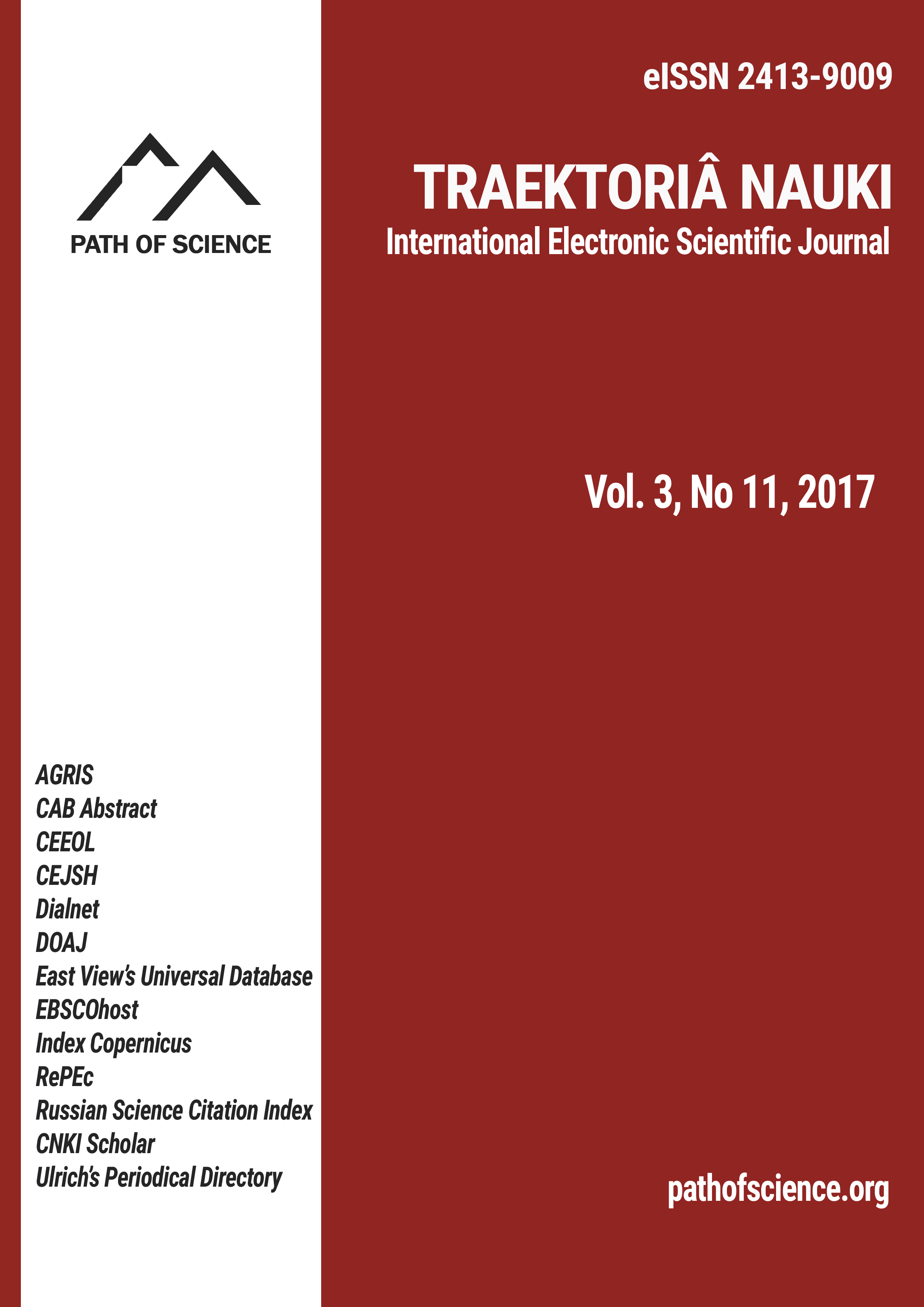
The article is devoted to the study of grotesque forms in Jonathan Swift's novel "Gulliver’s Travels" based on the text of part II of the novel "A Voyage to Brobdingnag". On the basis of the selected actual material, displays of the grotesque elements in the semantic field of the work’s text are traced. The grotesque world of the novel is the author's model of mankind, in which J. Swift presents his view not only on the state of the modern system of England, but also on the nature of man in general, reveals the peculiarities of the psychology of human nature, especially human socialization. In part II, the author continues to develop a complex and contradictory picture of human existence in front of the reader, the world of giants appears as an ambivalent system in which the features of an ideal society and ideal ruler, in author’s opinion, with the ugly face of man and society, are marvelously combined.
More...
The article is devoted to the study of genre transformation and the specifics of the stories by Eleanor Hodgman Porter. The signs and problems of new genre formations are considered, the range of scientific researches of the mentioned theme is outlined. The emphasis is placed on the genre specificity of the cycle of stories by E. Porter called “Short stories”. The development and the main tendencies of the genre transformation of the writer's stories in the historical-literary and ideological-aesthetic context are extracted.
More...
Middlemarch is not only one of the greatest novels by George Eliot but also one of the most popular and bulkiest novels in English literature, with its richly-peopled story, multi-plot structure, and outnumbering themes and arguments. The grandeur of Middlemarch has been perhaps due to its intellectual powers to include major ideas of the Victorian England, which also attracts contemporary readers as well, such as the idea of reform and progress at the aftermath of Industrial Revolution, the rise of science and scientific thought with its influence on theology, the changing face of the new world despite the old, and the overall prosperity of Victorian England greatly developing and reaching to the one tenth of the world’s soil. George Eliot situates her novel within such a complex scene of early 19th century and reflects the intermingled developments of the time in the fictitious world of Middlemarch community. Yet she not only reflects these discussions but also participates in them intellectually in Middlemarch. Interested in Victorian urge and relish on the ideas of reform and progress, this paper analyzes George Eliot’s Middlemarch with a New Historicist look to be able to grasp the idea of reform in the novel and evaluate it on political, scientific, and social grounds.
More...
In English literature, the Bildungsroman, or the novel of formation, emerged as one of the most popular literary types of fiction among Victorian realists and many of the most important works of realism are Bildungsromane. But the Bildungsroman did not emerge suddenly on literary scene in the Victorian Age. The present study relies on the assumption, supported by Bakhtin, that the Bildungsroman has its own history of development as a distinct category, form, type, or subgenre of the novelistic genre, which is in itself a long, complex, and interesting process of rise and consolidation of a literary pattern, tradition, and literary system. This process can be summarized as follows: from the ancient epic and novel to medieval romances to Renaissance picaresque fiction (continued in the seventeenth century) to (in English literature) the eighteenth-century rise of the English novel with its strong picaresque substratum and through romanticism and Goethe (accredited with having introduced in fiction the element of Bildung) to the Victorian flourishing of the novel of formation following Carlyle’s moment of a threefold literary reception of Wilhelm Meisters Lehrjahre. These are the main conventions which nurture the rise of the Bildungsroman as a subgenre from ancient beginnings to romanticism. Among the primary influences on the rise of the Bildungsroman, some belong, like romantic writings and Goethe’s canonical Bildungsroman, to the level of “allusion”. Others, like picaresque tradition and certain eighteenth-century English novels, belong to the level of “intertextuality”. The present article aims to disclose by its comparative and thematological perspectives of approach a number of experiences and aspects of literary practice whose diachronic unfolding should be considered in a study on the development history of the Bildungsroman.
More...
A very significant poetic determinant of resistance poetry is reflected in the contrapuntal understanding of the Other. According to this view, the position of the Other is assigned to the colonial subject by inverting the matrix of symbolic simulacra and by rearranging the predetermined positions of Centre and periphery. Although Darwish clearly highlights rival alter ego as an ethical and epistemic difference, he does not perceive the otherness as static phenomenon, which is the nature of Orientalist canon. On the contrary, in the Palestinian poetry of resistance the Other develops from the position of enemy to that of Wittgenstein’s fugitive part of personal spirituality. In this way, resistance poetry opposes the concept of alterity defined by the canon, since the Other represents a complex and polyvalent entity, rather than a stereotyped one. Consequently, such verse represents an opportunity to rediscover the man in his totality which indicates the intensity of universal humanism in Palestinian poetry.
More...
The paper discusses the peculiarities of functioning of hikaya as an art form in A. Eniki’s prose during the 1940s–1960s. The relevance of the research is determined by the uncertainty of the concepts used for designation of works of average and small forms of epics in the Tatar literature of the 20th century. The analysis has been performed in order to identify the genre characteristics of hikaya as the non-canonical genre of Tatar Literature, which is not identical to the non-canonical small epic genres (e.g., stories) in Russian and European literature. Furthermore, it has been established that hikaya is not identical to novella on the one hand and narrative on the other hand. Systemic structural analysis, syn-chronic and diachronic approaches to investigation of the material have been used to achieve the above-stated goal.
More...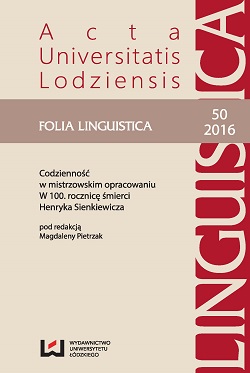
The article deals with the analysis of the artistic and the ideological assumptions of the constructing the literary image of the past in point of view of Henryk Sienkiewicz in connection with his polemic against Włodzimierz Spasowicz in the context of the discussion of the 19th-century about the values of historical novel. In the theoretical declarations the author pays major attention to the hypnotic charm of the past which he named „the brilliane of Milton’s paradise lost” and references to the great poetry of romanticism. In the writer;s programme intentions the literary works should presented the ideological versions of the myth of the Polish past during the period of national slavery. Sienkiewicz focuses on subjective experiences of his fictional heroes, connects existential and historical dimensions of human life, looking for semantic mechanisms of history. The analysis of the writer’s outlook on life concentrating on the universal questions like the sense of life, the essence of world, the human’s nature and the hierarchy of values. The article attempts to show that the absolute values existence depends on the memory of the past.
More...
The present article approaches Jay McInerney’s Bright Lights, Big City (1984) in light of Merlin Coverley’s concept of psychogeography to demonstrate the direct authority of the city as an integral part of the protagonist’s persona. The idea is to emphasize that urbanity, in its postmodern sense, can function as a culpable agent in shaping up the protagonist’s behavior and determining his fate. Therefore, this research studies McInerney’s Bright Lights, Big City to reveal how the life of the leading character–with his unstable state of mind–takes root primarily in his chaotic living environment. A psychogeographic evaluation of this novel allows us to see that urbanity influences the protagonist’s psyche, who evinces this deep impact through wandering in the metropolitan Manhattan. Further, this research demonstrates how the city remains triumphant as the protagonist falls into disease and alienation, or is left with an aporetic moment of decision: to unify with the force of urbanity or lose everything to its power.
More...